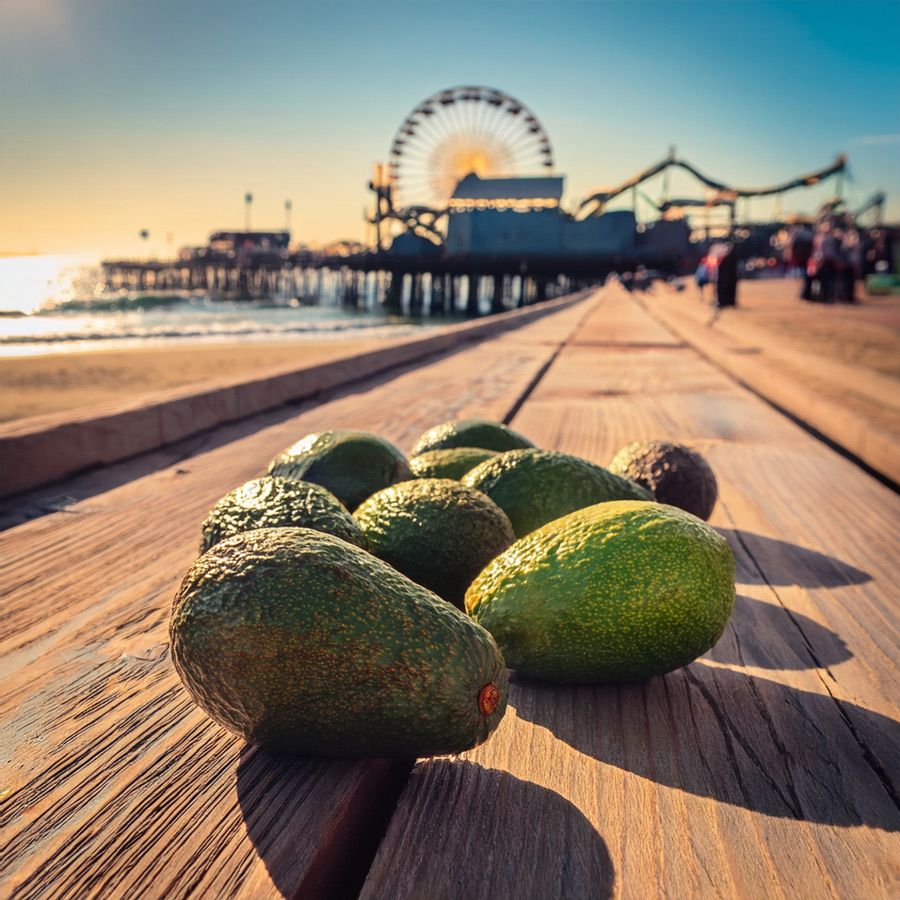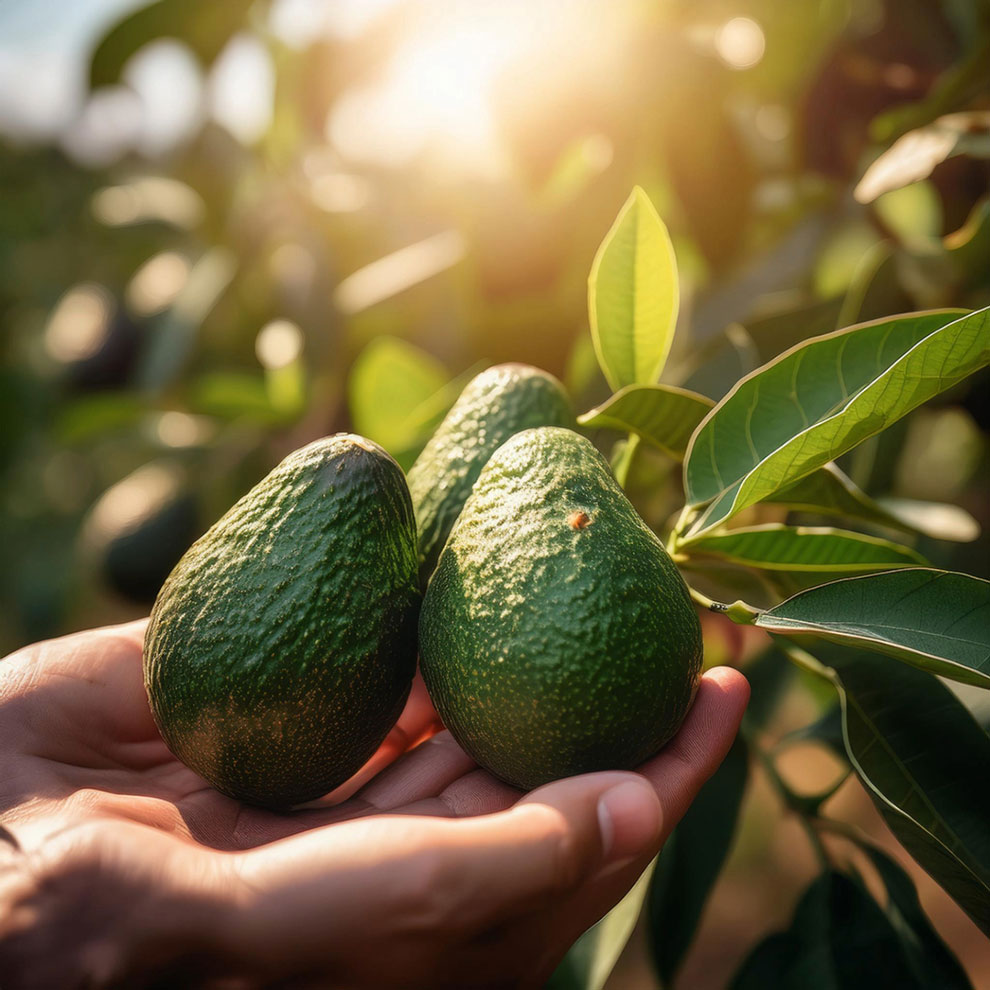The California Dream of the Avocado, Realized
Avocados are now as Californian as surfers, sunsets, and farmer’s markets. But this wasn’t always the case. Just over a century ago, the avocado was considered exotic — unfamiliar to most Americans and rarely found in grocery stores. So how did this fruit from Central America become a defining symbol of California’s food culture?
In this post, we explore how the avocado was domesticated in California, the history behind its cultivation, and how the state turned a tropical import into a thriving agricultural icon.
Escape with the Avocado Dreaming design 🥑✨ Drift into a serene slumber amidst lush avocados, overlooking a tranquil canyon river. Dive into the dream at Avocado Dreaming. Shop Today!

🌱 Where It All Began: Avocado Origins
The avocado (Persea americana) is native to south-central Mexico and parts of Central America, where it has been cultivated for over 10,000 years. Ancient civilizations like the Aztecs, Mayans, and Olmecs prized it for its high fat content, creamy texture, and energizing nutrients.
🚢 Avocados Arrive in California
The first known avocado tree in California was planted in 1848 by a man named Henry Dalton, a British landowner living in what is now El Monte, near Los Angeles. However, widespread cultivation didn’t begin until the early 1900s, when interest in the fruit grew among agricultural experimenters and horticulturists.
Key Milestone:
In 1911, a variety from Puebla, Mexico, was introduced to California and grew exceptionally well in the coastal climate — setting the stage for future avocado farming success.
🌿 The Rise of the Hass Avocado
Perhaps the most important step in the domestication of avocados in California was the accidental development of the Hass avocado.
The Hass Story:
- In 1926, Rudolph Hass, a postman in La Habra Heights, planted some avocado seeds.
- One of the resulting trees produced darker, bumpier-skinned fruit with longer shelf life and better flavor than the Fuerte, the dominant variety at the time.
- In 1935, Hass patented the tree — the first U.S. patent ever granted for a tree.
- Today, Hass accounts for 95%+ of all avocados grown and sold in California and the U.S.
The original Hass mother tree stood for over 75 years and became the genetic source for billions of avocados worldwide.
📈 How California Became Avocado Country
Several factors contributed to California becoming the epicenter of U.S. avocado cultivation:
1. Perfect Climate
California’s coastal regions, especially in San Diego, Ventura, and Santa Barbara counties, offer:
- Mild temperatures
- Low humidity
- Well-draining soil
- Seasonal rainfall
These conditions are ideal for growing avocados, which are sensitive to frost and root rot.
2. Year-Round Demand
As avocados gained popularity in health, wellness, and culinary circles, California growers responded with:
- Improved irrigation methods
- Ripening programs
- Organized cooperatives
This allowed for large-scale, efficient production — peaking during the spring and summer months.
🧪 Domestication Through Cultivation
Avocado domestication in California didn’t happen in a lab — it happened in orchards, through:
- Selective breeding: Farmers chose trees with the best yield, taste, and disease resistance.
- Grafting techniques: Trees were cloned from successful mother trees like Hass.
- Harvest optimization: Growers developed “ripe and ready” programs to ensure peak ripeness at grocery shelves.
What started as an unfamiliar crop evolved into a highly managed agricultural product, with strong emphasis on consistency, flavor, and sustainability.
📊 Economic Impact Today
- California now produces about 250–300 million pounds of avocados each year.
- The avocado industry contributes more than $500 million annually to California’s economy.
- Over 3,000 growers, most family-owned, manage roughly 50,000 acres of avocado orchards.
🌿 Sustainability and Modern Challenges
As demand continues to grow, California avocado growers face new challenges:
- Drought and water costs
- Climate change
- Competition from imports (especially Mexico and Peru)
In response, many farmers are turning to:
- Drip irrigation systems
- Integrated pest management
- Regenerative farming techniques
💡 Fun Facts
- Avocados are technically berries!
- The average avocado tree in California produces 60–80 pounds of fruit per year.
- The first avocado advertisement in the U.S. appeared in 1927, targeting upscale shoppers.
Final Thoughts: A Fruit That Found Its Home
The domestication of avocados in California is a story of experimentation, innovation, and adaptation. From one backyard seedling to a global superfruit, the avocado’s transformation is rooted in California’s unique climate, culture, and entrepreneurial spirit.
Today, avocados aren’t just grown in California — they’re celebrated here, defining a way of life that values health, freshness, and flavor.
References
Smithsonian Magazine – The Evolution of the Avocado
UC Riverside – Avocado Research Center
USDA Specialty Crops Reports
History of the Hass Avocado Tree – California Rare Fruit Growers



